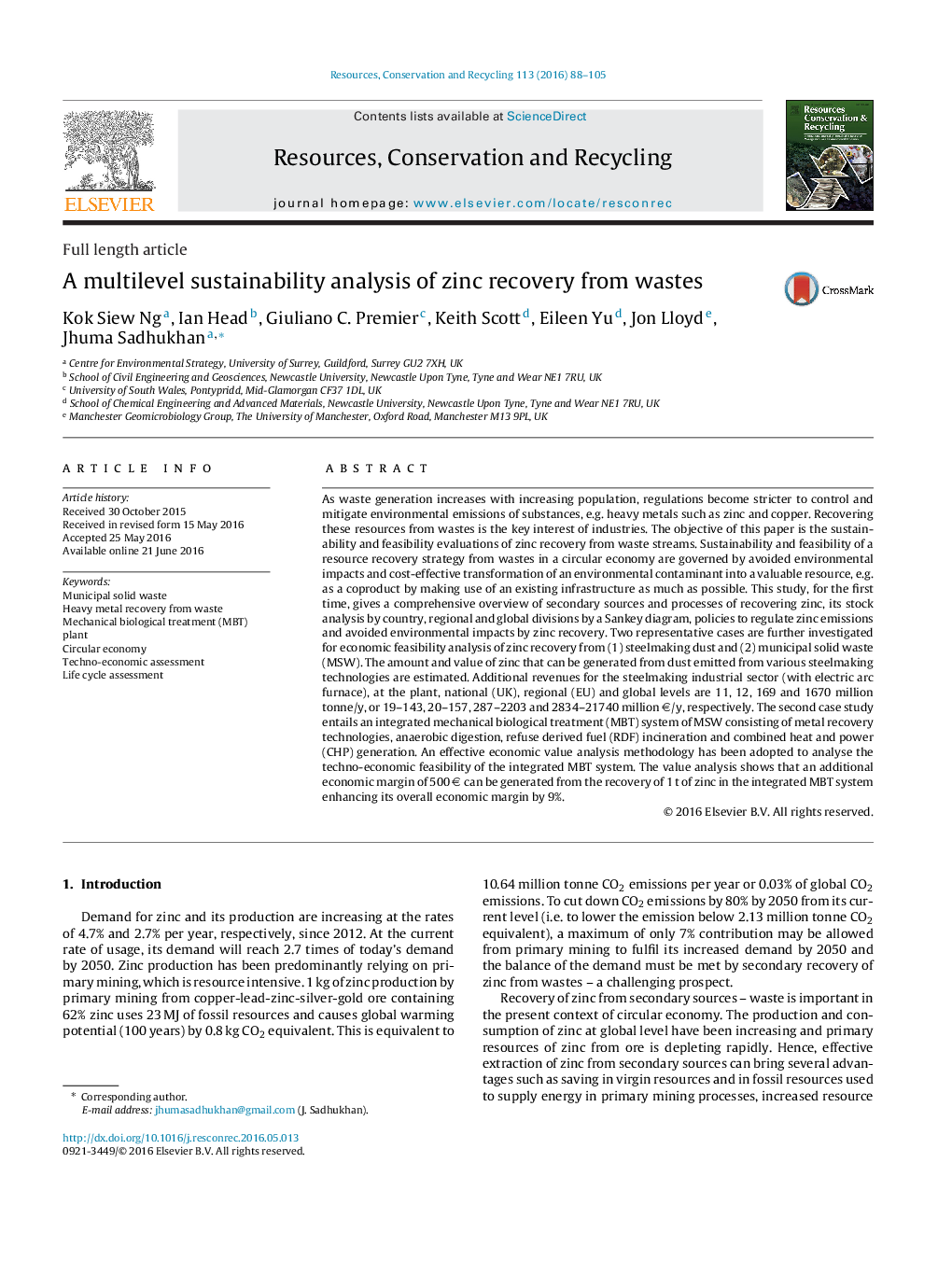| کد مقاله | کد نشریه | سال انتشار | مقاله انگلیسی | نسخه تمام متن |
|---|---|---|---|---|
| 1062681 | 1485678 | 2016 | 18 صفحه PDF | دانلود رایگان |
• Intensive review of secondary sources, demand and recovery technologies of zinc.
• Value analysis is applied to estimate profitability of each stream and product.
• LCIA methods, CML, Impact2002+ applied for resource use, toxicity potentials of Zn.
• Economics enhanced by 10% if iron, aluminium, copper, zinc in MSW are recovered.
• Highest to lowest profitable metal (€/tonne): Cu (3894) > Zn (500) > Al (113) > Fe (94).
As waste generation increases with increasing population, regulations become stricter to control and mitigate environmental emissions of substances, e.g. heavy metals such as zinc and copper. Recovering these resources from wastes is the key interest of industries. The objective of this paper is the sustainability and feasibility evaluations of zinc recovery from waste streams. Sustainability and feasibility of a resource recovery strategy from wastes in a circular economy are governed by avoided environmental impacts and cost-effective transformation of an environmental contaminant into a valuable resource, e.g. as a coproduct by making use of an existing infrastructure as much as possible. This study, for the first time, gives a comprehensive overview of secondary sources and processes of recovering zinc, its stock analysis by country, regional and global divisions by a Sankey diagram, policies to regulate zinc emissions and avoided environmental impacts by zinc recovery. Two representative cases are further investigated for economic feasibility analysis of zinc recovery from (1) steelmaking dust and (2) municipal solid waste (MSW). The amount and value of zinc that can be generated from dust emitted from various steelmaking technologies are estimated. Additional revenues for the steelmaking industrial sector (with electric arc furnace), at the plant, national (UK), regional (EU) and global levels are 11, 12, 169 and 1670 million tonne/y, or 19–143, 20–157, 287–2203 and 2834–21740 million €/y, respectively. The second case study entails an integrated mechanical biological treatment (MBT) system of MSW consisting of metal recovery technologies, anaerobic digestion, refuse derived fuel (RDF) incineration and combined heat and power (CHP) generation. An effective economic value analysis methodology has been adopted to analyse the techno-economic feasibility of the integrated MBT system. The value analysis shows that an additional economic margin of 500 € can be generated from the recovery of 1 t of zinc in the integrated MBT system enhancing its overall economic margin by 9%.
Journal: Resources, Conservation and Recycling - Volume 113, October 2016, Pages 88–105
